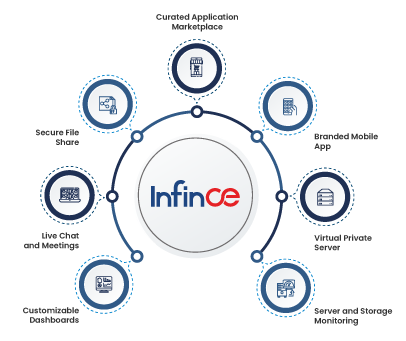5 Advantages of Adopting a Cloud-Native Technology Infrastructure
The number of enterprise applications that run on cloud is so big now that it is wiser to refer to the cloud as a way of doing IT rather than labeling it as an IT innovation. Today, the concept of cloud native applications is a mainstay and the new normal. For those who are not acquainted with the term, a cloud-native application in its simplest form implies an enterprise application that has been designed and developed specifically to run on cloud infrastructure.
It means that cloud-native application development is rooted in containers, microservices, and dynamic orchestration. The paradigm shift from costly on-premise technology infrastructure to on-demand subscription-based service availability has found takers from all business domains and includes all magnitude of enterprises ranging from multinational corporations to small and medium businesses. In fact, research firm Gartner estimates that today over 80% of all internally developed software enterprises are cloud-native. So why is there a growing affinity for cloud-based technology deployments? Here are some key benefits you would experience with a cloud-native strategy for your technology stack:
1. Cost Efficiency
Tougher market competition and dynamic consumer needs require you to constantly upgrade and evolve your business’s technology infrastructure to roll-out new services and offerings through digital channels. Configuring or re-engineering on-premise enterprise applications that handle various aspects of your business will involve heavy costs and time which will eat into your overall IT budgets.
The market dynamics change so fast that you may need to alter or roll back new features on your consumer-facing digital channels as soon as they get launched, in order to make way for newer or modified ones. When IT expenses go overboard, it will impact your profit margins significantly, leaving you with the minimal financial muscle to invest in your core business. With cloud native applications, upgrades, as well as dynamic changes to software, can be easily handled. By configuring changes incrementally to the cloud application, it can be quickly made available to end-users at considerably lower costs.
Related Reading: Private Or Public Cloud: Where Should My Business Invest?
2. Flexibility and Scalability
As with any cloud-based software deployment, you get the benefit of scale on-demand with a cloud native application strategy. When your business starts out from the root stage, you may not need massive amounts of storage or computing power to run various digital customer channels and as time passes, this requirement may vary depending on growth factors. This is where the scale on-demand capability of the cloud will be very attractive. You need not maintain physical storage or computing hardware regularly to scale up your technology back end when demand spikes occur. Everything would be easily managed on the cloud and business owners can focus on ideas and initiatives to expand their customer service while the technology silently scales up behind the curtains to ensure there is no disruption.
3. High Availability
For any digital-friendly initiative that a business wants to propagate to engage with their customers, a key necessity is the constant availability of the back end digital applications that make this experience possible. If the technology has been built with an on-premise model of operation, then not only does a business need to ensure the application’s resilience, it also needs to ensure that the supporting hosting and maintenance infrastructure is robust to empower continuous business without disruption.
With a cloud native architecture for your business applications, this disruption-free availability is a guaranteed benefit. Leading cloud service providers offer uninterrupted availability of the hosting environment with limitless expansion flexibility to accommodate sudden spikes of transactions or business growth. This gives business owners one less major technology paradigm to worry about. Additionally, there is 24 X 7 support from cloud vendors to assure that any challenge is mitigated seamlessly without causing any disruptions to your business operations.
4. Increased Efficiency
With a cloud native application architecture, it is quite easy for enterprises to automate a large number of tasks involved in the operation and deployment of their digital infrastructure. By building components within an application as microservices, it is easy for scaling, modifying and upgrading specific features or modules within the application without having to rebuild the entire thing from scratch. Besides, cloud native applications are inherently extensible through APIs that enable them to be integrated seamlessly with other reporting and analytical tools for deriving insights that can be used for better decision making by enterprises.
5. Secure Data Management
While it has been proven beyond doubt that public cloud environments offer nearly unbreakable security for your business data, several decision-makers do not want to move their core data systems to public cloud infrastructure for fear of security threats. By creating cloud-native enterprise applications, you get to manage your data on your own private cloud infrastructure and ship data to and from various systems in your own cloud environment. While storage and expansive flexibility can be availed from leading cloud providers, you have control over your entire application landscape wherein your own security policies and protocols can be implemented in addition to the standard procedures followed by these vendors.
The unparalleled benefits offered by a cloud-native application strategy is a boon to businesses that want to engage with the digital-savvy consumer base of today. From handling their internal operations to building customer-facing digital channels, businesses can rely on enterprise cloud service providers like INFINCE to deliver a robust and secure environment to build and deploy applications. Get in touch with us to see how Infince can help transform your business’s technology into a truly cloud-native one.







